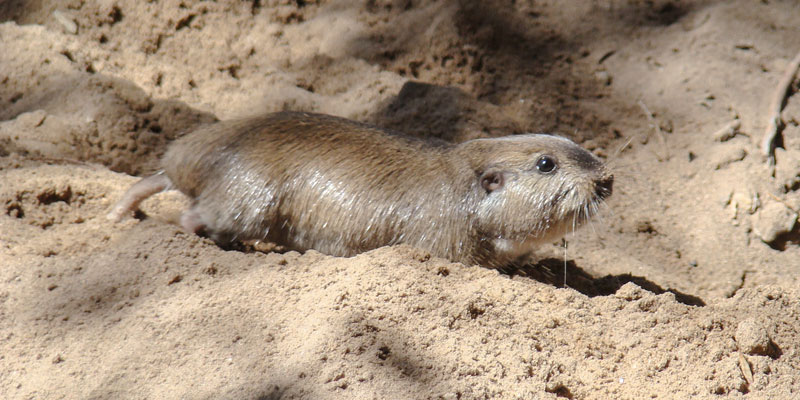The family Ctenomyidae, known as tuco-tucos, comprises one genus, Ctenomys, with 65 species; all are found in central and southern South America up to 4,000 m in elevation. The fossil record show that the family extends from the early Pliocene and that they are closely related to the family Octodontidae. Ctenomys are fossorial species with small ears and eyes and powerful bodies. They mostly inhabit areas with sandy and loamy soil, with a few species living in dry grasslands. They dig using their forefeet, which are equipped with extremely long and strong claws to loosen the packed earth, to build complex, branched burrow systems. Some Ctenomys species urinate on the compacted soil in order to soften the ground for them to dig with their claws and their incisors. Their burrow systems are built with different chambers that are used for nesting and storing food, such as roots, stems and grasses.
In a few of the Ctenomys species there is a complex social system and the burrows are used by many individuals, but in most species the burrows in the colonies are used by single individuals or mothers with young. Vocalization is used to communicate various signals, including establishing territories, mating rituals, or as a fear response. When some species are threatened or confronted by an intruder they will attack, while other species will respond by backing into their burrows, using their tails as sensing organs. The complex burrows systems that Ctenomys build are used as shelter by other mammals, lizards, toads, invertebrates and sometimes birds. Although tucos-tucos can damage crops and the root systems of fruit trees, and their burrows create problems for livestock, they also aerate and fertilize the soil, helping to maintain soil suitable for the growth of natural plants and crops, and thus benefiting both wild and domestic herbivores, and humans.






